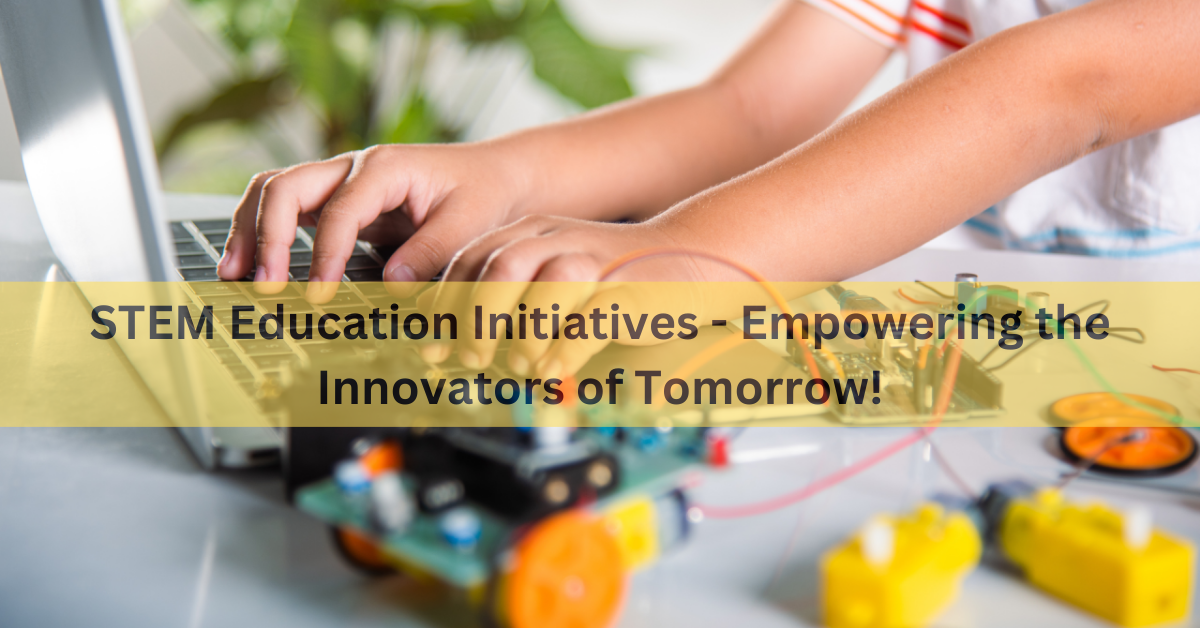STEM education initiatives are at the forefront of preparing students for the challenges and opportunities of the 21st century. These initiatives focus on integrating science, technology, engineering, and mathematics (STEM) disciplines into educational frameworks to foster critical thinking, problem-solving skills, and innovation. Here’s a comprehensive look at STEM education initiatives and their transformative impact:
Contents
Understanding STEM Education Initiatives
STEM education initiatives aim to cultivate a strong foundation in science, technology, engineering, and mathematics among students from early childhood through higher education. These initiatives emphasize hands-on learning, interdisciplinary approaches, and real-world applications to prepare students for future careers in STEM fields.
Benefits of STEM Education Initiatives
- Workforce Readiness: Equips students with essential skills and knowledge required for emerging STEM-related careers in industries such as robotics, cybersecurity, biotechnology, and sustainable energy.
- Innovation and Creativity: Encourages creativity, innovation, and entrepreneurship through project-based learning and problem-solving challenges.
- Diversity and Inclusion: Promotes inclusivity by engaging students from diverse backgrounds and underrepresented groups in STEM fields.
- Global Competitiveness: Prepares students to compete in a global economy driven by technological advancements and scientific discoveries.
Key Components of STEM Education Initiatives
- Integrated Curriculum: Integrates STEM disciplines into cohesive, project-based learning experiences that emphasize real-world relevance and application.
- Extracurricular Activities: Offers opportunities for hands-on experiences through clubs, competitions, maker spaces, and STEM-focused summer camps.
- Teacher Professional Development: Provides educators with training, resources, and support to implement effective STEM teaching strategies and curriculum enhancements.
- Industry Partnerships: Collaborates with industry leaders, research institutions, and STEM professionals to provide mentorship, internships, and career pathways for students.
Implementing STEM Education Initiatives
- School Partnerships: Establishes partnerships between schools, universities, businesses, and community organizations to expand STEM education opportunities.
- Technology Integration: Utilizes digital tools, simulations, virtual labs, and educational software to enhance STEM learning experiences and engagement.
- Community Engagement: Engages parents, local businesses, and community stakeholders to support STEM initiatives and promote STEM awareness.
Challenges and Considerations
- Equity and Access: Addresses disparities in STEM education access, resources, and opportunities among diverse student populations and underserved communities.
- Educational Policy: Advocates for policies that support STEM education funding, curriculum development, teacher training, and integration of STEM initiatives into educational standards.
- Gender and Minority Representation: Encourages participation and retention of women and minorities in STEM fields through targeted recruitment and support programs.
Future Trends in STEM Education Initiatives
- Emerging Technologies: Focuses on AI, machine learning, cybersecurity, and advanced manufacturing as emerging fields within STEM education.
- Global Collaboration: Expands international partnerships and collaborations to address global challenges through STEM innovation and research.
- Digital Literacy and Computational Thinking: Integrates digital literacy skills and computational thinking across all educational levels to prepare students for digital age challenges.
Conclusion
STEM education initiatives play a pivotal role in shaping the future by equipping students with essential skills, fostering innovation, and addressing global challenges through scientific inquiry and technological advancements. By promoting STEM literacy and preparing students for careers in STEM fields, these initiatives empower individuals to contribute meaningfully to society and drive economic growth and innovation.


